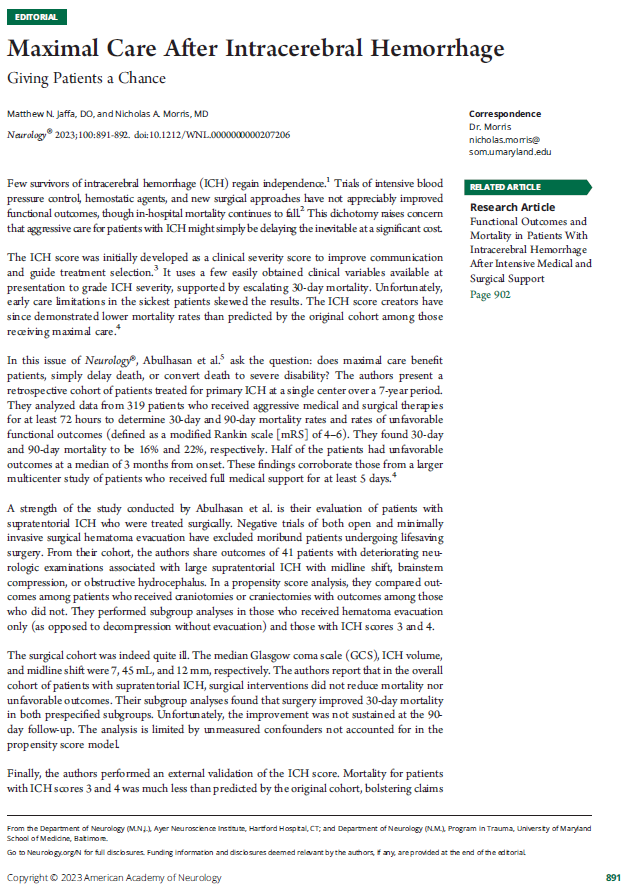Maximal Care After Intracerebral Hemorrhage Giving Patients a Chance
May 2023
Few survivors of intracerebral hemorrhage (ICH) regain independence.1 Trials of intensive blood pressure control, hemostatic agents, and new surgical approaches have not appreciably improved functional outcomes, though in-hospital mortality continues to fall.2 This dichotomy raises concern that aggressive care for patients with ICH might simply be delaying the inevitable at a significant cost.
The ICH score was initially developed as a clinical severity score to improve communication and guide treatment selection.3 It uses a few easily obtained clinical variables available at presentation to grade ICH severity, supported by escalating 30-day mortality. Unfortunately, early care limitations in the sickest patients skewed the results. The ICH score creators have since demonstrated lower mortality rates than predicted by the original cohort among those receiving maximal care.4
In this issue of Neurology®, Abulhasan et al.5 ask the question: does maximal care benefit patients, simply delay death, or convert death to severe disability? The authors present a retrospective cohort of patients treated for primary ICH at a single center over a 7-year period. They analyzed data from 319 patients who received aggressive medical and surgical therapies for at least 72 hours to determine 30-day and 90-day mortality rates and rates of unfavorable functional outcomes (defined as a modified Rankin scale [mRS] of 4–6). They found 30-day and 90-day mortality to be 16% and 22%, respectively. Half of the patients had unfavorable outcomes at a median of 3 months from onset. These findings corroborate those from a larger multicenter study of patients who received full medical support for at least 5 days

